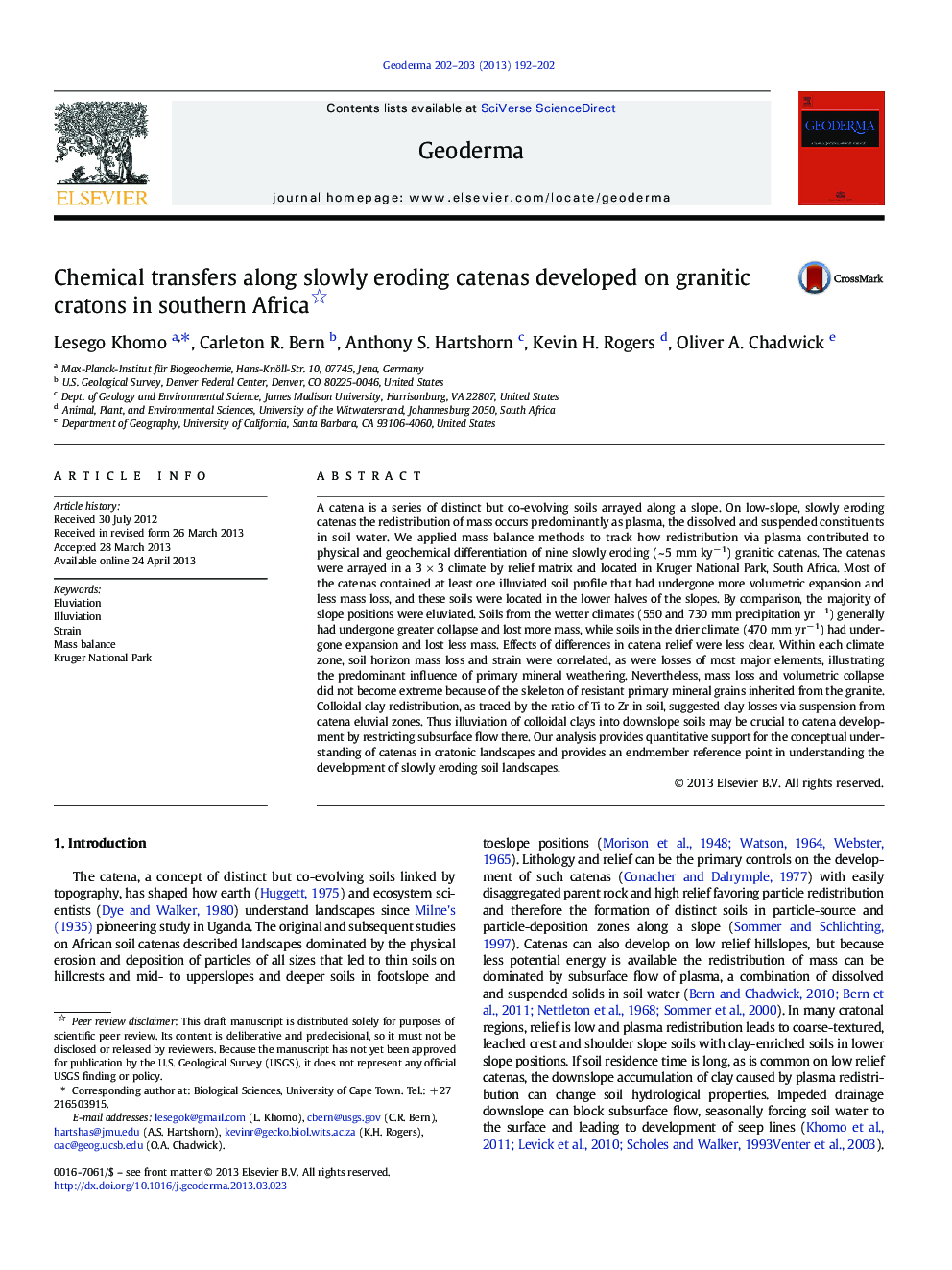| کد مقاله | کد نشریه | سال انتشار | مقاله انگلیسی | نسخه تمام متن |
|---|---|---|---|---|
| 4573505 | 1629485 | 2013 | 11 صفحه PDF | دانلود رایگان |

• Slowly eroding catenas develop by transfer of dissolved and suspended mass (plasma).
• Eluviation and illuviation zone identification is specific to catena context.
• Eluviated zones cover more hillslope, and mass loss and soil collapse are linked.
• Climate influenced catena development more than relief.
• Colloidal clay illuviation may influence catena development by restricting flow.
A catena is a series of distinct but co-evolving soils arrayed along a slope. On low-slope, slowly eroding catenas the redistribution of mass occurs predominantly as plasma, the dissolved and suspended constituents in soil water. We applied mass balance methods to track how redistribution via plasma contributed to physical and geochemical differentiation of nine slowly eroding (~ 5 mm ky− 1) granitic catenas. The catenas were arrayed in a 3 × 3 climate by relief matrix and located in Kruger National Park, South Africa. Most of the catenas contained at least one illuviated soil profile that had undergone more volumetric expansion and less mass loss, and these soils were located in the lower halves of the slopes. By comparison, the majority of slope positions were eluviated. Soils from the wetter climates (550 and 730 mm precipitation yr− 1) generally had undergone greater collapse and lost more mass, while soils in the drier climate (470 mm yr− 1) had undergone expansion and lost less mass. Effects of differences in catena relief were less clear. Within each climate zone, soil horizon mass loss and strain were correlated, as were losses of most major elements, illustrating the predominant influence of primary mineral weathering. Nevertheless, mass loss and volumetric collapse did not become extreme because of the skeleton of resistant primary mineral grains inherited from the granite. Colloidal clay redistribution, as traced by the ratio of Ti to Zr in soil, suggested clay losses via suspension from catena eluvial zones. Thus illuviation of colloidal clays into downslope soils may be crucial to catena development by restricting subsurface flow there. Our analysis provides quantitative support for the conceptual understanding of catenas in cratonic landscapes and provides an endmember reference point in understanding the development of slowly eroding soil landscapes.
Journal: Geoderma - Volumes 202–203, July 2013, Pages 192–202